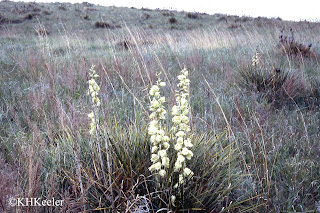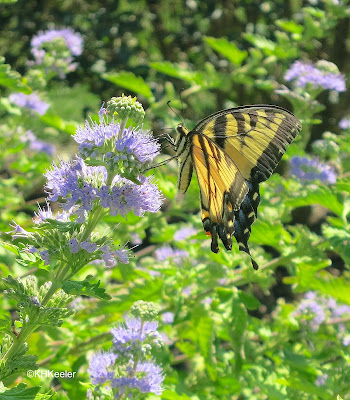Repost from 2013

Huang Shan, Yellow Mountain, China
Books on art history tell me that landscape painting as a distinctive style first appeared in Europe in the 1500's. The Chinese have a much longer history of painting landscapes. Several landscape paintings from the 11th century survive and literary sources refer to earlier works. Here are links to two 11th century examples: Guo Xi Early Spring (1072) and Fan Kuan (10th-early 11th C), Travelers Among Mountains and Streams (scroll down).
The landscape paintings of China look exotic. They are executed in ink with a brush and are often monochromatic. More familiar American and European landscapes are done in bright oil paint. (links to American landscape painters, and English landscape painters, Constable, for example).
The shapes of the rocks, mountains and trees in traditional Chinese landscape painting seem odd to an American eye. Clouds or fog fill parts of the pictures, adding to the dream-like quality.
When you look at Chinese landscape paintings with an eye used to seeing North American landscapes, it is easy to react in disbelief--"oh really?" The landscapes look imaginary.

Chinese landscape painting
What a trip to China shows you is that Chinese artists painted what they saw.

cliffs, Huang Shan
note tree half way down on left for scale
Huang Shan, Yellow Mountain (top of page and above) is an important Chinese destination but not a major stop for international tourists. It is dramatically craggy and can be very foggy.

fog on rice terraces, Longsheng, China

Li River, Guilin
The places in my photographs other than Yellow Mountain -- the rice terraces of Longsheng, the Li River between Guilin and Yangshuo, and the city of Hangzhou -- are common destinations in tours to China. My exotic-looking pictures did not require going to remote Chinese locations but were taken in accessible, commonly-visited places in China.
Li River, Guilin, China

Guilin, China
Chinese landscape painting is exotic to the western eye but the artists painted what they saw. The landscapes are unlike western landscapes.

West Lake, Hangzhou, China
To someone who grew up in Guilin, China, North American or European landscapes must look exotic.
Whatever your ordinary is, go see exotic landscapes!
Comments and corrections welcome.
Kathy Keeler, A Wandering Botanist
More at awanderingbotanist.comJoin me on Facebook
 |
| Huang Shan, Yellow Mountain, China |
When you look at Chinese landscape paintings with an eye used to seeing North American landscapes, it is easy to react in disbelief--"oh really?" The landscapes look imaginary.
 |
| Chinese landscape painting What a trip to China shows you is that Chinese artists painted what they saw. |
 |
| cliffs, Huang Shan note tree half way down on left for scale |
 |
| fog on rice terraces, Longsheng, China |
 |
| Li River, Guilin |
 |
| Li River, Guilin, China |
 |
| Guilin, China |
 |
| West Lake, Hangzhou, China |
To someone who grew up in Guilin, China, North American or European landscapes must look exotic.
Whatever your ordinary is, go see exotic landscapes!
Comments and corrections welcome.
Kathy Keeler, A Wandering Botanist










